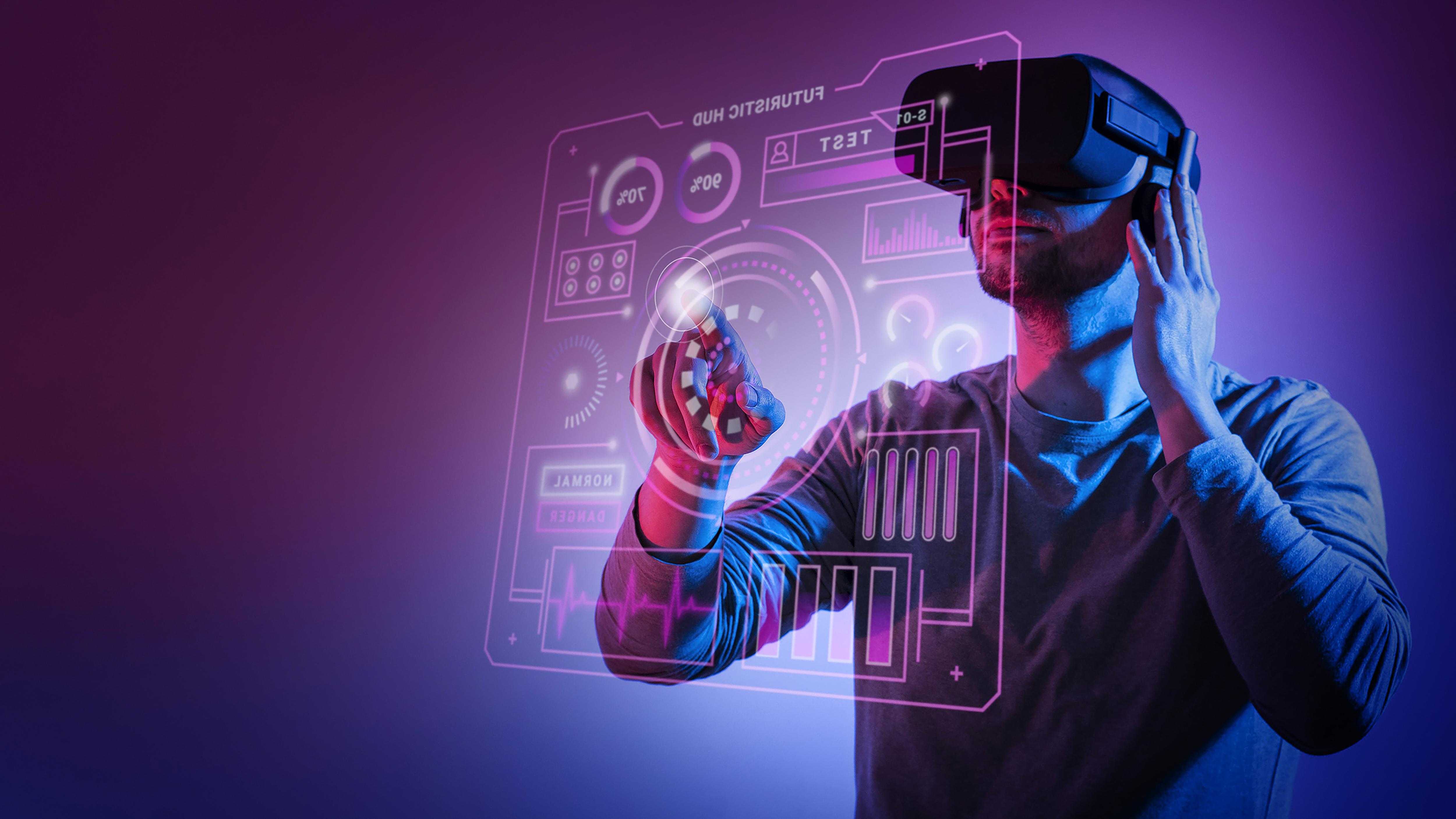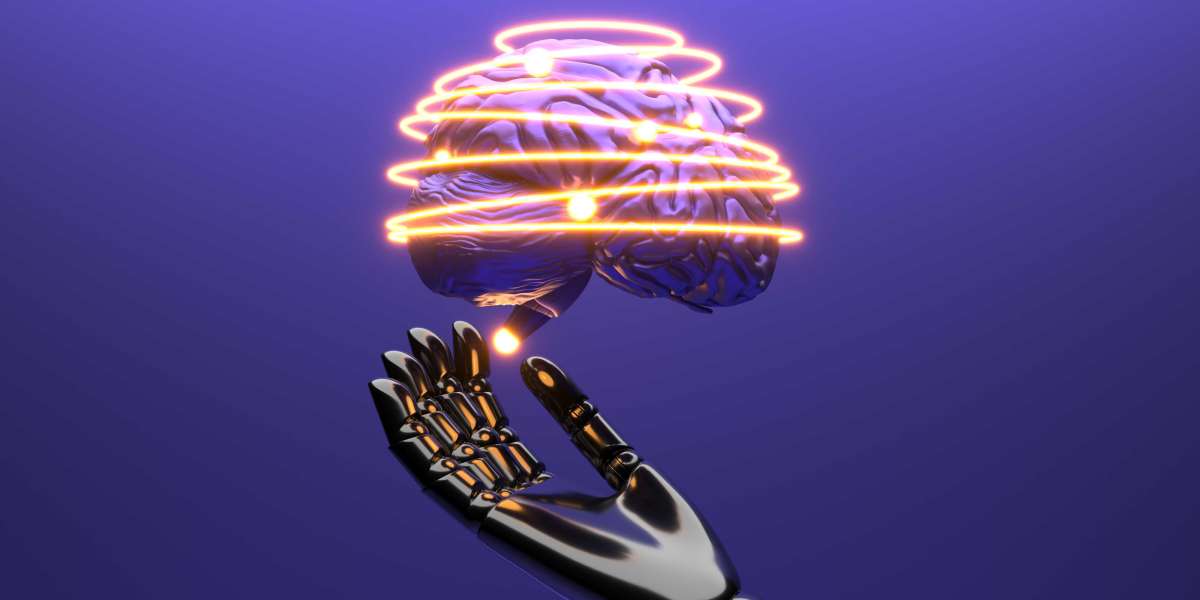Chatbot.
Introduction to Chatbots
Definition and Purpose of Chatbots
In our increasingly digital world, chatbots have become an integral part of our online interactions. But what exactly are chatbots? At their core, chatbots are computer programs designed to simulate human conversation through artificial intelligence (AI) or rule-based algorithms. These virtual assistants can engage in textual or auditory conversations with users, providing information and performing tasks based on predefined rules or by leveraging AI capabilities. The purpose of chatbots is multifaceted.Firstly, they aim to enhance user experience by offering instant and personalized interactions. By employing natural language processing (NLP) techniques, chatbots can understand user queries and provide relevant responses quickly.
They act as a bridge between humans and machines, simplifying complex processes and making information accessible in a conversational manner. Moreover, chatbots enable businesses to automate various tasks and streamline customer support operations.By handling common inquiries or performing routine actions like placing orders or scheduling appointments, chatbots free up human agents' time for more complex issues. This not only improves operational efficiency but also leads to cost savings for businesses across industries.

Historical Background and Evolution of Chatbot Technology
The concept of conversational agents dates back several decades. The first-ever chatbot called "ELIZA" was developed in the 1960s by Joseph Weizenbaum at MIT's Artificial Intelligence Laboratory. ELIZA used pattern matching techniques to mimic psychotherapy conversations with users. Over the years, advancements in computing power and AI algorithms have significantly evolved chatbot technology. In the late 1990s, we witnessed the rise of rule-based chatbots that followed predefined scripts to engage in basic conversations with users. However, it wasn't until recent years that AI-powered chatbots truly revolutionized the field. With the emergence of machine learning algorithms like deep learning, chatbots can now understand and generate human-like responses. These AI chatbots leverage vast amounts of training data to improve their language understanding and contextual awareness, resulting in more natural and meaningful interactions. Today, we find chatbots integrated into various platforms such as websites, messaging apps, and customer service portals. They have become an indispensable tool for businesses looking to provide round-the-clock support or create engaging user experiences. As chatbot technology continues to evolve, the future holds exciting possibilities. Advancements in natural language understanding (NLU), sentiment analysis, and emotion recognition will enable chatbots to comprehend complex queries better and respond empathetically. Combined with technologies like voice recognition and image processing, the potential applications of AI-powered chatbots are boundless. In the following sections of this article, we will delve deeper into the architecture of chatbots, explore different types of chatbot implementations, discuss their applications across industries, examine the development process involved in creating a functional chatbot solution while highlighting best practices and challenges faced by developers in this exciting field.
Front-end components:
User interface design
User interface (UI) design is a crucial aspect of chatbot development as it determines how users interact with the chatbot. A well-designed UI ensures a seamless and intuitive user experience. The design should be visually appealing, easy to navigate, and provide clear guidance to users. It involves creating visually engaging elements such as buttons, menus, and input fields. Additionally, the UI design should be consistent with the branding and tone of the organization. In order to create an effective UI for a chatbot, designers need to consider various factors. These include understanding the target audience and their preferences, identifying common user intents, and designing conversational flows that align with these intents. Designers may also use prototyping tools to simulate interactions and gather feedback from potential users before finalizing the UI.
Natural Language Processing (NLP)
Natural Language Processing (NLP) is a key technology behind chatbots' ability to understand and respond to human language. NLP allows chatbots to interpret user inputs by analyzing patterns in text or speech data. It involves several components such as text tokenization, part-of-speech tagging, named entity recognition, sentiment analysis, and dialogue management. One fundamental aspect of NLP in chatbots is intent recognition. Intent recognition algorithms identify the purpose or intention behind user queries or statements. This helps in determining appropriate responses based on predefined actions or routing them to relevant back-end processes. NLP also enables sentiment analysis which allows chatbots to understand emotions expressed by users through text or speech inputs. Sentiment analysis helps in providing empathetic responses or routing conversations appropriately based on user sentiments.
Back-end components:
Knowledge base or database integration
The knowledge base plays a crucial role in empowering chatbots with accurate information to respond to user queries. It acts as a repository of structured data or unstructured information that chatbots can access during conversations. Knowledge bases are often created by domain experts or can be generated through machine learning techniques. Integrating the chatbot with a knowledge base requires careful consideration of data sources, ensuring data quality and consistency, and implementing efficient search algorithms to retrieve relevant information quickly. For complex applications such as medical chatbots, knowledge bases may include vast amounts of medical literature, treatment guidelines, or patient records. Database integration is another important aspect where chatbots retrieve real-time information from databases to provide up-to-date responses. This integration enables functionalities like order tracking in e-commerce chatbots or accessing customer details in customer support scenarios.
Machine Learning algorithms
Machine Learning (ML) algorithms play a significant role in enhancing the capabilities of chatbots by enabling them to learn from data and improve their performance over time. ML algorithms are used in various areas such as intent recognition, entity extraction, dialogue management, and response generation. For instance, ML algorithms can be trained on large datasets comprising user queries and corresponding responses to learn patterns and generate contextually appropriate replies. This training can be done using supervised learning techniques where human-labeled training data is provided or through reinforcement learning approaches where the bot learns by interacting with users and receiving feedback on its actions. The advantage of using ML algorithms in chatbot development is their ability to adapt and improve based on user interactions. This allows the bot's responses to become more accurate over time as it continues learning from new conversations. Understanding the architecture of chatbots involves comprehending both front-end components like user interface design and natural language processing (NLP), as well as back-end components including knowledge base integration and machine learning algorithms. A seamless user interface design ensures an intuitive experience for users interacting with the bot while NLP empowers the bot to understand human language. Integrating knowledge bases and databases provides the bot with accurate and up-to-date information, while machine learning algorithms enable continuous learning and improvement of the chatbot's performance. By carefully considering and implementing these components, chatbot developers can create sophisticated conversational agents capable of delivering efficient and personalized interactions.
Types of Chatbots
Rule-based Chatbots: How they work and their limitations
Rule-based chatbots, also known as scripted chatbots or decision-tree chatbots, operate based on predefined rules and responses. These bots follow a set of if-then statements programmed by developers to understand and respond to user queries. They typically use keywords or patterns in the user's input to trigger specific pre-written responses. Rule-based chatbot development involves creating a database of potential user inputs and mapping them to appropriate responses. Despite their simplicity, rule-based chatbots have certain limitations. One major drawback is their lack of flexibility in handling complex or ambiguous queries that fall outside the scope of their programmed rules. Since they rely on explicit instructions, any conversation that deviates from the expected flow may confuse them. Additionally, rule-based bots cannot learn from new data or improve their responses over time without manual intervention.
Examples of industries where rule-based chatbots are commonly used
Rule-based chatbots find extensive applications across various industries. In customer service, these bots are often employed for providing basic information, answering frequently asked questions (FAQs), and guiding users through simple processes such as password resets or order tracking.
E-commerce platforms utilize rule-based bots to handle product inquiries, recommend items based on user preferences, and facilitate checkout processes. Similarly, in healthcare settings, these bots can assist with appointment scheduling or provide general information about common ailments. Even educational institutions employ rule-based chatbots for tasks like answering admission-related questions regarding eligibility criteria, application submission process clarification, and course details. Banks also utilize these bots for tasks like account balance inquiries and fund transfers within predefined limits.
AI-powered Chatbots: Deep learning techniques for training AI Chatbots
AI-powered chatbots leverage artificial intelligence (AI) technologies like machine learning and natural language processing (NLP) to deliver more advanced conversational experiences. These chatbots can understand and interpret the context of user queries, allowing them to provide more accurate and personalized responses. Training AI-powered chatbots involves exposing them to large datasets, including both historical conversations and relevant domain-specific information. Deep learning techniques play a crucial role in training AI chatbots. One popular approach is using recurrent neural networks (RNN) or transformers to process sequential data, enabling the bot to remember previous interactions and maintain context throughout the conversation. Additionally, using techniques like word embeddings helps the bot understand nuances in user input by representing words as dense vectors in a semantic space.
Advantages and challenges of AI-powered Chatbots
AI-powered chatbots offer several advantages over rule-based counterparts. Firstly, they can handle complex queries more effectively due to their ability to learn from data and adapt their responses accordingly.
This adaptability allows them to understand natural language inputs better, even when users express the same intent differently. Moreover, AI-powered chatbots can continuously improve their performance through machine learning algorithms that analyze user feedback and update response models accordingly. This iterative learning process ensures that these bots become smarter over time, leading to enhanced customer satisfaction. However, developing AI-powered chatbots poses certain challenges. Training an effective AI model requires substantial amounts of high-quality data for both supervised and unsupervised learning algorithms. An insufficient or biased dataset may result in inaccurate or unintended responses from the bot. Furthermore, maintaining conversational coherence presents another challenge as contextually understanding multi-turn conversations can be intricate. The unpredictability of human language often makes it difficult for these bots to handle ambiguous queries or accurately interpret sarcastic remarks or slang expressions. While rule-based chatbots excel at handling simple or predictable interactions within specific domains, AI-powered chatbots offer a higher level of sophistication and adaptability by leveraging deep learning techniques. However, it is important to consider the specific use case, available resources, and desired user experience when deciding between these two types of chatbots.
Applications of Chatbot Technology
Customer Support:
Chatbots have emerged as valuable tools in the realm of customer support, providing efficient and timely assistance to users. One key use case is resolving customer queries and providing instant support. By leveraging natural language processing (NLP) capabilities, chatbots can understand user inquiries and deliver relevant responses, helping customers find solutions without the need for human intervention. This not only saves time but also ensures consistent and accurate information delivery. In addition to query resolution, chatbots can integrate seamlessly with Customer Relationship Management (CRM) systems to provide personalized support.
By accessing customer data stored within CRM platforms, chatbots can retrieve information about a specific user's previous interactions, purchase history, or preferences. Armed with this knowledge, chatbots offer tailored recommendations or provide targeted assistance based on individual needs, further enhancing the customer experience.
E-commerce:
The e-commerce industry has witnessed significant benefits from implementing chatbot technology. One prominent application is enhancing user experience through personalized product recommendations. By analyzing user behavior patterns and preferences gathered from previous interactions or browsing history, chatbots can suggest relevant products that align with a customer's interests. This personalized approach helps users discover new items of interest while increasing the likelihood of making a purchase. Furthermore, chatbots play a crucial role in facilitating order tracking and payment assistance for online shoppers.
Users can simply interact with a chatbot to inquire about shipment status or seek guidance regarding payment-related queries without having to navigate complex web interfaces or wait for human support. Additionally, virtual shopping assistants powered by AI chatbot technology are becoming increasingly popular as they guide users through the purchasing process by offering real-time recommendations and answering questions about products or promotions. Overall, leveraging chatbot capabilities in e-commerce fosters seamless communication between businesses and customers while streamlining various aspects of the shopping experience.
Chatbot Development Process
Section A: Planning Phase: Defining Objectives, Target Audience, and Use Cases
Subtitle: Crafting a Strategic Foundation for Effective Chatbot Implementation During the planning phase of chatbot development, it is crucial to clearly define the objectives, target audience, and use cases for the chatbot. This stage sets the strategic foundation and directs subsequent development efforts. Objectives may vary from automating customer service interactions to enhancing e-commerce experiences or even providing personalized recommendations. Identifying these objectives allows developers to align their efforts with specific business goals.
Understanding the target audience is equally important in creating a successful chatbot. Factors such as demographics, preferences, and communication styles need to be taken into account during this phase. For instance, an AI-powered chatbot for a tech-savvy audience might incorporate advanced functionalities like natural language understanding (NLU) capabilities or integration with other platforms such as Shopify Chatbot. Use cases drive the conversation flow design and guide how users interact with the chatbot. By clearly defining use cases—such as providing product information, answering frequently asked questions (FAQs), or processing transactions—the developer ensures that the conversation remains focused and efficient. Properly designed conversational paths enable customers to receive relevant information promptly while minimizing any potential frustrations they might encounter.
Section B: Design Phase: Creating Conversational Flows and User Interface Mockups
Subtitle: Shaping Engaging Interactions through Intuitive Design The design phase of developing a chatbot involves creating conversational flows and user interface mockups that shape engaging interactions between users and bots. Conversational flows outline possible dialogues by mapping user inputs to appropriate responses from the bot—a crucial step in achieving effective communication. To create intuitive dialogue flows, developers employ techniques like decision trees or state machines that consider different scenarios based on user inputs received through text, voice, or rich media. The goal is to anticipate user intents and provide appropriate responses or actions.
This includes handling variations in user queries, understanding typos or misspellings, and recognizing sentiments expressed within the conversation. User interface mockups are visual representations of how the chatbot will appear to users. These mockups incorporate elements like message bubbles, interaction buttons, and other graphical elements to ensure a seamless user experience. By considering factors such as font size, color palette, and placement of UI elements, developers enhance readability and usability.
Section C: Development Phase: Selecting Suitable Platforms, Programming Languages, and Frameworks
Subtitle: Leveraging Technology for Efficient Bot Building In the development phase of building a chatbot, selecting suitable platforms, programming languages, and frameworks is crucial for efficient implementation. Various platforms like Chatbot.theb.ai or AI Chatbot Builder offer pre-built components that expedite development time while providing flexibility for customization.
Choosing the right programming language depends on factors such as deployment environment (web-based or mobile), integration requirements with existing systems (Customer Service Automation), and performance considerations. Popular programming languages used for chatbot development include Python (with libraries like NLTK for Natural Language Processing) and JavaScript (for web-based bots).
Section D: Testing Phase: Ensuring Bot Accuracy, Response Time, and Error Handling Capabilities
Subtitle: Polishing Performance through Rigorous Testing The testing phase ensures that the developed chatbot performs optimally by checking its accuracy in understanding user inputs while maintaining an appropriate response time. Robust testing methodologies encompass functional testing to validate individual components, integration testing to ensure seamless system interactions, and performance testing to assess the bot's scalability. To evaluate accuracy, developers utilize test datasets covering various user scenarios, including frequently asked inquiries and edge cases. This process helps identify potential weaknesses in understanding user intents and refine the machine learning algorithms accordingly. Response time is also measured to guarantee timely and meaningful interactions with users. Error handling capabilities are crucial for maintaining a positive user experience. Developers test the chatbot's ability to provide helpful prompts or suggestions when faced with ambiguous or unexpected user inputs. Additionally, error logging mechanisms help capture and track errors that occur during live usage, allowing developers to make necessary improvements.
Section E: Deployment Phase: Choosing Hosting Options and Integrating with Existing Systems
Subtitle: Taking the Chatbot Live while Ensuring Seamless Integration In the deployment phase of chatbot development, choosing suitable hosting options is vital for ensuring accessibility and performance. Cloud-based hosting services like AWS or Google Cloud provide scalability, reliability, and security features essential for serving a large number of concurrent users effectively.
Seamless integration with existing systems—such as CRM systems or e-commerce platforms—adds significant value to chatbots by empowering them with access to relevant customer data or inventory information. Integration enables AI Chatbots (AI Bot Messenger) to provide personalized experiences by retrieving order history or suggesting tailored products based on individual preferences. Attention must be given during this phase to security considerations like data encryption (to safeguard sensitive information) and authentication mechanisms (to prevent unauthorized access). Moreover, continuous monitoring through analytics tools allows developers to gather insights on bot performance metrics such as usage patterns (Chatbota), conversational success rates, or frequently misunderstood queries—providing valuable feedback for ongoing improvements.
Chatbot Best Practices Challenges
Tips for designing effective conversational experiences
Designing a chatbot that delivers an exceptional conversational experience requires careful consideration of several key factors. Firstly, it is crucial to ensure that the chatbot's language and tone align with the brand's voice, creating a consistent and familiar experience for users. Secondly, keeping interactions concise and contextually relevant helps users stay engaged and minimizes confusion. Additionally, incorporating elements of personalization by using the user's name or referencing previous conversations can enhance the overall user experience. It is also important to provide clear instructions or prompts to guide users effectively through the conversation flow. Implementing natural language processing (NLP) algorithms can improve the chatbot's ability to understand user queries accurately.
Addressing challenges in chatbot development
Developing a successful chatbot comes with its fair share of challenges. One major hurdle is tackling ambiguity in user queries or statements. Chatbots should be trained on a diverse range of data and equipped with machine learning algorithms to handle various linguistic nuances effectively.
Another challenge lies in maintaining high accuracy rates while handling complex queries or providing detailed information. Striking a balance between automated responses and seamless handoff to human operators when needed can be challenging but vital for customer satisfaction. Another challenge faced by developers is ensuring data privacy and security while collecting user information such as phone numbers or personal details. Implementing industry-standard encryption protocols and stringent security measures is essential when integrating chatbots into systems that handle sensitive data like banking or healthcare.
Conclusion
Designing an effective chatbot involves adhering to certain best practices such as maintaining brand consistency, delivering concise interactions, incorporating personalization, and utilizing NLP algorithms for accurate understanding of user queries. However, challenges do lie ahead in terms of addressing linguistic ambiguity, maintaining accuracy in complex queries, and ensuring data privacy and security. Despite these challenges, the potential benefits of chatbot technology are vast. From providing efficient customer support to automating lead qualification processes, chatbots have revolutionized various industries. As technology continues to advance, we can expect chatbots to become even more sophisticated and capable of delivering seamless conversational experiences. With the right design strategies and a focus on overcoming challenges in development, businesses can harness the power of chatbots to enhance customer engagement and drive growth.
So why wait? Embrace this innovative technology and elevate your business with a chatbot today!






